By Julia Fairclough As the pre-dawn hush hovers over Chelsea, the one part of the city already awake is the produce markets over by the Hood Milk Plant. There, stalls of fresh produce beckon the most discerning of buyers; typically wholesalers for grocery stores and restaurant chains. While he doesn't stand out as the only chef in town, John Ryan is certainly a restaurant owner who goes the extra mile to hand-select fresh produce for his recipes. Ryan, 46, the owner of The Green Tomato II on Elm Street in Davis Square, arrives at the produce market at 4 a.m. each day, feeling pretty happy to do what he likes to do for a living-make others happy through a nice, home-cooked meal. The American and Italian eatery features three kinds of homemade soups each day, sauces, gravies and even mashed potatoes. Nothing comes out of a can. "I like to make people happy, and a lot of times it's as simple as making a good meal," Ryan said. "It goes a long way." He opened The Green Tomato II this past August. Ryan opened his first restaurant, The Green Tomato, in Reading six years ago. He was formerly a restaurant consultant, and many of the places he worked with to this day use his recipes. "I can take that a bit far; I even make my dog (Maggie) her own meals," he admitted. "She loves steamed chicken and vegetables." Ryan grew up in Lynn, the older sibling of two sisters and one brother. While all the other kids wanted to play ball or work on their car, he opted to watch his grandmother cook homemade sauces. "So the passion for food was there right away," he said. Since moving into Davis, Ryan has enjoyed doing business in such an eclectic community that is also easy going and friendly. While he has felt the grip of the economic downturn, he plans to remain in Davis and is optimistic that things will pick up. In the meantime, he can focus on keeping it simple. Even if it boils down to letting eager children go behind the counter to make their own dessert (with parental approval). "It was nice to just see them enjoy themselves," he said. The Green Tomato II is offering a 25% special off anything on the menu through January 24. |
||||
By Julia Fairclough Seeking The year 2009 has dawned upon us Even the most sunniest of personalities may find A quick walk through the Newly-weds Glenn and "Plus, it is an attitude," Glenn said. "I have a lot to be grateful for." Deborah likes to read poetry when life seems unbearable, as the written word offers a Universal message about faith and love. "I As Hope "American citizens have to People need to switch their way of thinking away from She added that she has intensified her yoga practice and works hard to take deep breaths when things become overwhelming. Valens Finding hope for 2009 also boils down to faith that Over at Union Square Smoke Shop, owner Dave Across the street at Midnite Convenience, owner Frank Golden shrugged and admitted he takes it all on the cuff. "I |
|||||||
By Doug Holder It must have been hard to walk in the basement of Finagle-A-Bagel in Harvard Square on a cold, gray Saturday morning, and sit down with the original members of the Bagel Bards, a bunch of grizzled gray- beard veterans of the local poetry scene. Here he was, all of 30 years old, and a sufferer of advanced kidney disease to boot. And because of his health life was indeed difficult. Mike didn't finish college even though he was quite bright, and he had to survive on disability and the limited life that came with it. I never heard him talk about a girlfriend or a love interest. It must have been a lonely life for a young guy. And so there he was at the table, shaking a bit, perhaps stuttering, but saying his piece, and exhibiting an enthusiasm and energy that could put us all to shame. Mike became a regular, accompanied by his pal Jack Scully. Scully had sparked his interest in the Bagel Bards, after reading an article about the group in The Boston Globe, written by Ellen Steinbaum. He slowly worked his way into the hearts of all the members. He work shopped his poems, took advantage of every reading opportunity offered, started to publish in the Bagel Bard house organs, as well as a wide variety of small press magazines. Mike even started a poetry series in his hometown of Plymouth, Mass. Last Summer (2008) Mike attended the Solstice Writing Workshop at Pine Manor College and came back to the group beaming. He made new strides in his writing, and made new contacts in the poetry world. During his time with us Mike published two collections of poetry: "Stunted Inner Child… (Cervena Barva Press), and "Rebuilding the Pyramids: Poems of Healing In A Sick World," with the Ibbetson St. Press. The last time I saw Mike was at the Somerville News Writers Festival (Nov. 22, 2008) He was in his element, dressed in a resplendent Chinese tunic, chatting it up with the faculty at Pine Manor College, and the many poets and writers he knew in the community. He was excited about the prospects of his new books. While I was at work I got an email from a poet and a close friend of Mike's, Irene Koronas. Mike had passed away surrounded by family and friends. Mike lasted way longer than he was expected to. He was fighting this disease since he was 13. But in the time I knew him I never got the sense that he was jaded. He continued to be a rabid music fan, always had a child-like enthusiasm for poetry, and displayed an iconoclastic sense of humor. I will miss seeing him coming through the doors of the Au Bon Pain every Saturday morning with his pal Jack who towered over his slight figure like a gentle, protective giant. I'd always say "What's up, Mike." And god love him, he always had a scoop.
"The Holy Fool" ( For Mike Amado 1974-2009) THE HOLY FOOL (for Mike Amado, 1974 – 2009) Tapping congas in a red shirt, he brought music to all of us from ordinary life where magic does not rule. Non-listeners did not challenge him when he uttered his poems directly from an open heart. He was wiser than his years. A transplant failed and years in dialysis taught him how to blur out time when needed, how to fly like an eagle above his body. He brought me back to youth when animals and gypsies caught fire and those who witnessed became Holy Fools. He was one, too, turning ruin to beauty, his mortal pain soaring on careful wings. –Carolyn Gregory, 1/3/09 |
|||
Our Picks for 2008 Best Idea: Building a soccer stadium in Somerville. Best all around citizen: Tony Pierantozzi, Superintendent of Somerville Public Schools Readers Choices for 2008 Best Somerville Food & Restaurants Best Breakfast: Neighborhood Restaurant & Bakery, Union Square Best Combination Breakfast & Lunch: Ball Square Cafe, Ball Square Best Small Breakfast & Luncheonette: Supreme Kitchen, 233 Highland Ave. Best Italian Food Rest: Al Fresco Restorante, 382 Highland Ave, Davis Square. Best Chinese Rest: Wang's, Magoun Square. Best Mexican Food: Taqueria La Mexicana, 247 Washington St. Best Variety and all around Restaurant: Mt. Vernon Restaurant & Pub, 14 Broadway Best Seafood: Pescatore, Ball Square Best Irish Pub: PJ Ryan's, Teele Square Best Local Bar: Precinct Bar, Union Square Best Local Bar/Restaurant: The Independent, Union Square Best Thai Food: Thai Hut, 93 Beacon St. Best Hamburger: R.F. O'Sullivan & Son, 282 Beacon St. Best Hot-Dog: Spike's Junkyard Dogs, Davis Square Best Roast Beef Sandwich: Deli-icious, Davis Square Best Pizza: City Slicker Cafe, 588 Somerville Ave. Best Bakery: Winter Hill Bakery, 318 Broadway Best Sushi: Snappy Sushi, Davis Square Best Ribs: Redbones Barbecue, Davis Square Best Sub Shop: Leone's Subs & Pizza, Winter Hill Best Indian Restaurant: Diva Indian Bistro, Davis Square Bet Coffee Shop Local: True Grounds, Ball Square Best Coffee Shop Franchise: Dunkin Donuts, Davis Square Best Deli: Maria's Italian Cold Cuts, Winter Hill Best Liquor Store: Winter Hill Liquor Mart – 313 Broadway Best of Somerville Services Best Electrician: Michael Santangelo Best Plumber: TJ Sillari Plumbing & Heating, 99 Albion Street Best Attorney: Richard Di Girolamo 424 Broadway Best Teacher: Mario Barrios, Somerville High Best Politician: Rep. Denise Provost Best City DPW Employee: Jean Angiulo Best Real Estate Agent/Realtor: Rosalee Zammuto, ERA The Norton Group Best Real Estate Rental Agent: Ross Blouin, Colony Real Estate Best Bank Employee: John Norris, Century Bank, Fellsway West Best Waitress: Patty Oppedisano, Ball Square Cafe Best Waitress runner up: Hazel Cooper, Alfresco Best Bartender: John Morgan, Ristorante Sagra Best Barber Shop: Tony's Barber Shop, Winter Hill Best City Employee: Donna Amenta Best City Nurse: Mary Hart, Mount Auburn Clinic Best Somerville Poet: Doug Holder Best Somerville Writer: Ananda Lowe Best Somerville Celebrity: Jimmy Del Ponte Best of Somerville Business Best Somerville Bank: Cambridge Portuguese Credit Union, 493 Somerville Avenue Best Real Estate Company: ERA The Norton Group, Ball Square Best Insurance Agency: Wedgewood-Crane & Connolly Insurance, Davis Square Best Creative Business in 2008:Artifaktori, Davis Square Best Auto Body Shop: Pats Auto Body, 161 Linwood St Best Law Firm: Sillari & Glines, 92 Highland Ave Best Convenience/Neighborhood Store: Winter Hill Mart Best Travel Agency: Baker Travel, Davis Square Best Tow Company: Pat's Tow, 160 McGrath Hwy Best Dry Cleaners: Mystic Tailors & Cleaners, Winter Hill Best Somerville Non Profit Agency: Caspar Inc. Best Florist: Bostonian Florist, 92 Highland Avenue Best Entertainment: Ristorante Sagra, Davis Square Best Comeback Politician: Rep. Carl Sciortino Best New Business: Space Self Storage, 51 McGrath Hwy Best Pet Store: Big Fish Little Fish, 55 Elm St Best Auto Recycler: Nissenbaum's Auto Parts, 480 Columbia St Best Bookstore: Porter Square Books |
|||||
Gov. The total cost of the $3,203.02 per Patrick is Legislators' salaries have been raised every two The At the moment, Democratic House Speaker Sal The remaining 196 legislators currently receive the new base salary of $61,439.76. Over In his official letter to State Treasurer Beacon Hill Roll Call / Special Report / January 7, 2009 Copyright © 2008 Beacon Hill Roll Call. All Rights Reserved. By Bob Katzen |
||||
| Facing a likely additional $1 billion budget gap this year, Governor Deval Patrick today filed legislation requesting expanded budget-cutting authority in order to avoid disproportionate cuts to programs and services residents rely on most during challenging economic times. "A The expanded 9C power will Without 9C authority, the Governor's budget cutting |
|
There We The School Committee – new Chairperson Maureen The Board of Aldermen – new The Mayor – Joe Curtatone came through with a So |
|||
Part 6: Schools By Joe Beckman (The This It's In the years following Watergate, not much Those Let's look at the alternatives. With If we think of incentives rather than This sounds pretty grand, but Second, we know that Not for long, however.. Third, the best Fourth, Fifth, Sixth, you Finally, This vision challenges subjects we now think are |
|||
Tara |
|||

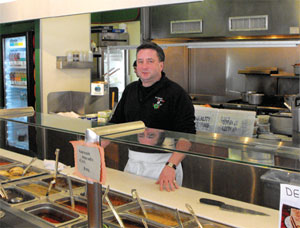
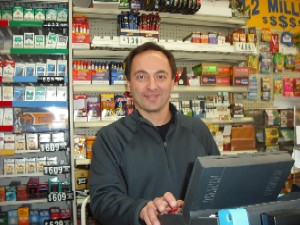
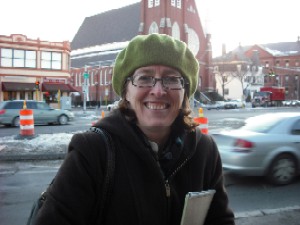
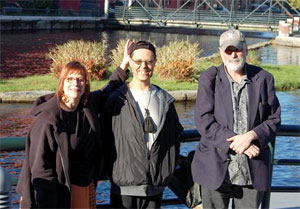
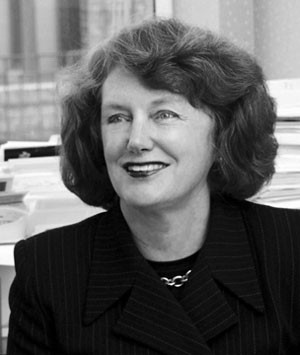




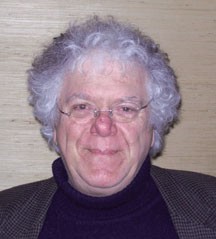
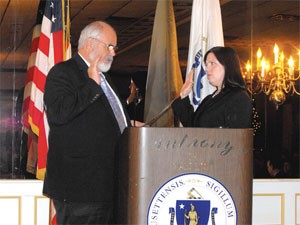















Reader Comments